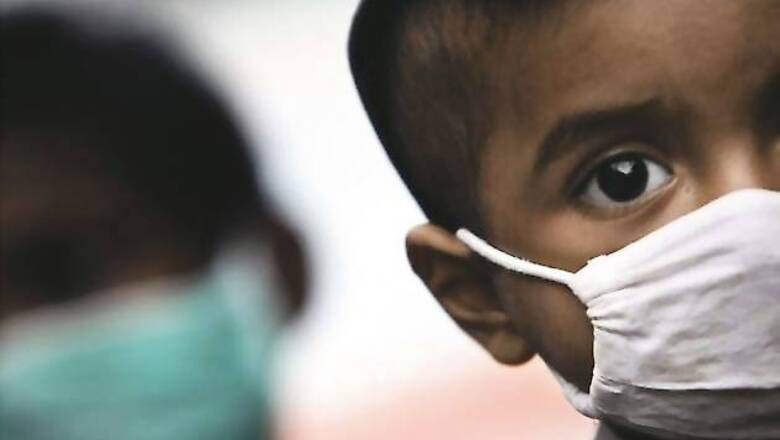
views
When can a baby girl born in Madhya Pradesh expect to live as long and healthy as a baby girl born in Kerala, overcoming the six-fold higher risk of dying before her first birthday? When will a rural Indian have the same level of satisfaction about the healthcare he or she receives, as a foreign medical tourist featured in the brochures of corporate hospitals? Will the 40 million Indians, who are annually pushed into poverty because of unaffordable healthcare costs, be relieved of the crushing burden of catastrophic health expenditures in a country where private, out-of-pocket spending accounts for 71 per cent of all health financing?
While the Indian media is currently concerned over the fluctuating growth rates of the economy, it is the health indicators which should cause considerable concern.
Our infant and maternal mortality rates (presently 47 and 210 respectively) do not compare with those of Sri Lanka (11 and 47, respectively, a few years ago). While 42 per cent of our children below three years are undernourished, 15 per cent of urban adolescents are overweight, calling for nutrition policies that provide adequate and appropriate nutrition at each stage of life.
India is home to a third of the world's measles cases as well as 61 million persons with diabetes. Smoking claims a million lives each year, with chewing tobacco adding to the world's highest load of oral cancer. In 2000, India lost 9.2 million potentially productive years of life due to early cardiovascular deaths occurring in the 35-64 years age range.
This loss is projected to rise to 17.9 million years in 2030. We need a health system that can deal with the unfinished agenda of underdevelopment as well as the maladies of maladapted modernity.
With the emergence of new infectious diseases and a rapid rise in heart diseases, stroke, diabetes, cancers, mental illness and injuries, the health system has to respond to new challenges through creation of capability for prevention, early detection and cost-effective treatment.
All this while continuing to emphasise maternal and child health, and traditional infections like tuberculosis, malaria and AIDS as the prime public health priorities.
India's poor health indicators reflect the cumulative consequences of neglecting primary healthcare in all its dimensions.
Good health is inconceivable without an assurance of safe water, domestic and public sanitation, adequate nutrition and clean environment to all segments of the population. Easy access to dependable health services which can avert or ameliorate common ailments, an expected feature of good primary healthcare, is mostly unavailable in both rural and urban areas.
The National Rural Health Mission (NRHM) has attempted to strengthen primary healthcare, with focus on maternal and child health. While some success has been recorded in recent years, evidenced by a steady, but not speedy decline in infant and maternal mortality rates, much greater investment is needed in infrastructure, health workforce, management systems, community empowerment and governance. Urban primary healthcare too needs attention, with well dispersed community health centres forming the base of a three-tier network of healthcare facilities.
For this challenging agenda to be successfully addressed over the next decade, we need to increase the level of public financing in health from around 1.2 per cent of the GDP at present to at least 3 per cent, to make it comparable to China (2.3 per cent) and Thailand (3.3 per cent). India spends $132 per capita on health, compared to $193 in Sri Lanka, $309 in China and $345 in Thailand. More public funding helps to reduce out-of-pocket spending.
The increased funding should be spent on strengthening primary healthcare infrastructure and district hospitals; scaling up the size and quality of the health workforce (ranging from community health workers to nurses and doctors); free supply of essential drugs and vaccines; and creation of a tax-funded system of universal health coverage wherein an essential health package of primary, secondary and tertiary services will be available, free of charge, to every Indian citizen. Such a system would be based on a single payer system rather than a fragmented system of multiple insurance providers. The government will be the guarantor of universal health coverage, even if it is not the sole provider. Health services will be provided by a network of public facilities and contracted in private providers.
This wish list cannot even be partially fulfilled, without system reform, innovation and political will. To ensure reforms in pooled drug procurement, supply chain management, healthcare facility accreditation, programme evaluation, human resource development and portability of health financing, new regulatory and facilitatory structures and systems are needed.
Competency-linked cadres for public health and health management should be created, to improve the design and delivery of health programmes. Information technology-enabled service delivery models, e-health, m-health and telemedicine can enhance outreach and effectiveness of healthcare. The complementary roles of Central and state governments need to be clarified and collective commitment to the creation of a robust and corruption-free health system must be generated across the political spectrum.
Even as the health system is progressively strengthened, policies and programmes in other sectors, which impact health, need to become sensitive and responsive to public health concerns. From agriculture and food processing to urban design and transport, there are many actors who can contribute to better health of our people. While convergence of services is needed at the frontlines, co-ordination of policies is required at the central level. Social determinants like education, employment, income and gender equality are also important enablers of good health.
I do not have a simple prescription for transforming health in India. In a complex system like health, a package of interventions is needed for successful, speedy and sustainable change. If I were permitted only one wish, I would like to see the whole of India having a health system like that of Tamil Nadu and social determinants like Kerala. Both states are now being cited internationally as examples of good health at low cost. The compass clearly points to southern models, if we wish to travel towards good health.

















Comments
0 comment